How Eddie Murphy Saved SNL From Extinction

Welcome to ComedyNerd, Cracked's new deep dive series that will be renamed “TragedyJock" on April 1 (and never go back). Today's topic: Eddie Murphy achieves a mind-boggling level of fame. (Also, the ComedyNerd newsletter launches September 30. To sign up, enter your email below.)
The year was 1980, and Saturday Night Live was going to hell.
Don't Miss
John Belushi and Gilda Radner and the rest of the comics who electrified America were gone, off to make music, movies, and mayhem. SNL co-creator/producer Lorne Michaels was ghosting as well, wanting a break that NBC wasn’t willing to give him. Lorne’s choice as successor, Al Franken, essentially lost the gig after targeting NBC head honcho Fred Silverman with a Weekend Update bit, “Limo for a Lame-O.”
Enter Jean Doumanian, an associate producer who would prove not up to the task of the head job. She assembled a cast of so-so talents for Season 6, most of whom, like Jean herself, would last just one season. Doumanian did manage to discover a young mimic named Joe Piscopo, as well as one other diamond among the cubic zirconia.
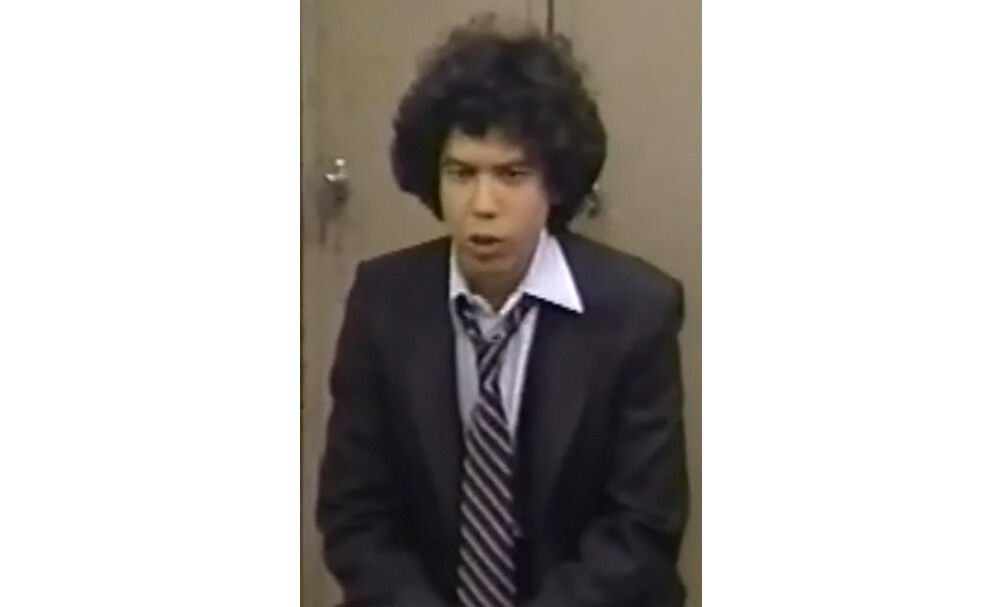
NBC
Doumanian conducted special auditions to find the show a non-white cast member. Thirty Black comics auditioned, with Doumanian leaning toward comedian Charlie Barnett. But talent coordinator Neil Levy convinced her to see—and hire—a young Eddie Murphy.
But that didn’t mean she believed in Murphy’s talent. Under Doumanian’s reign, Eddie got little airtime, just one reason Season 6 was a critical and ratings disaster. Dick Ebersol took over for the overmatched Doumanian late in the season, wisely canning everybody from her cast but Piscopo and Murphy.

NBC
“Eddie Murphy had been some kind of a part-time guy under Doumanian, and Michael and I screened something ,” says writer Marilyn Suzanne Miller. “And Dick went, ‘This guy is unreal! He’s got to be on the air.’" So when the next season began, Ebersol put 19-year-old Murphy front and center. Was it a prudent decision? “I would use four words,” says James Andrew Miller, coauthor of Live From New York. “He saved the franchise.”
In Season 7’s very first show, Murphy launched a handful of classic characters, working the crowd into a frenzy with his Little Richard Simmons. He followed up later in the show with Tyrone “Kill My Landlord” Greene, the jailbird poet of Prose and Cons.

NBC
The following week, Murphy introduced his most popular character yet: Buckwheat, the now grown but still speech-impaired Little Rascal. In his first appearance, Buckwheat pitched Buh-wheet Sings, a mail-order, greatest-hits record.
The mush-mouthed star reimagined a number of contemporary hits, including Fee Tines a Mady, Wookin’ Pa Nub, and Una Panoonah Banka. The sketch had it all—TV nostalgia (which Murphy would revisit with his Gumby), undeniable charisma, and some gentle comic cruelty.
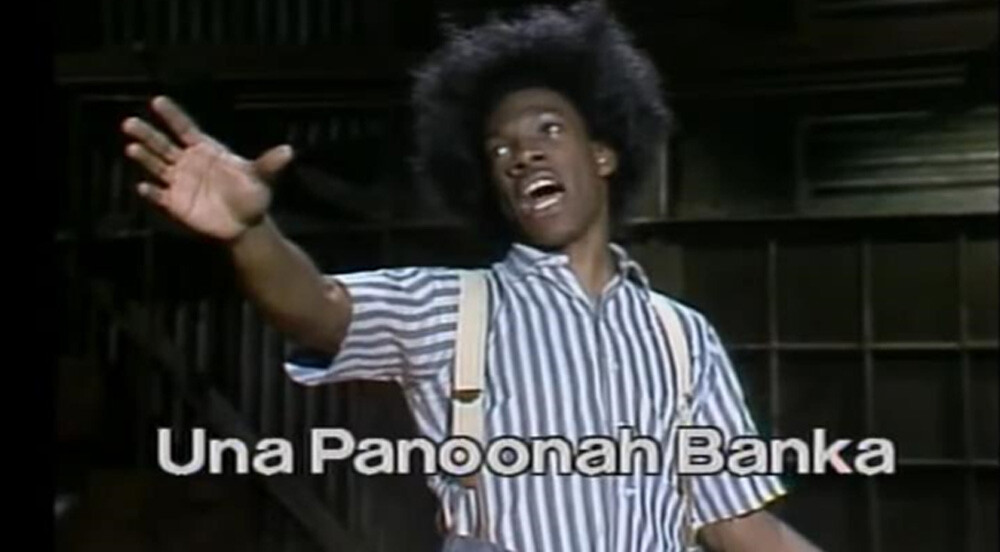
NBC
The character caught fire and became Murphy’s most recurring character, appearing a dozen times including this cheeky commercial for Buckwheat Jeans. It’s every SNL newbie’s dream, hitting a home run with a popular recurring character (or in Murphy’s case, several popular recurring characters). But crazy fame is never all that it’s cracked up to be.
“I remember going through a period when people would scream out characters from Saturday Night Live—Buckwheat or Mr. Robinson or Gumby—and it would really piss me off,” Murphy told Playboy back in 1990. “I wouldn’t turn around. It bothered me, because I was Eddie, you know?”
“I Painted Myself Into A Corner”
The bigger Murphy got, the more he hid from the public, and few people have ever gotten bigger than Eddie Murphy. In a matter of months, he went from unknown to superstar. His first movie, 48 Hours, was a smash, his first comedy album quickly went gold, and Paramount gave him a million bucks just to make sure he didn’t make movies anywhere else.
And they couldn't let him make music. He'd be unstoppable, and they'd lose him forever.
The rest of the SNL cast knew who was driving the show’s rediscovered success, and they didn’t necessarily like it. When Murphy’s 48 Hours co-star, Nick Nolte, got too effed up to fulfill his SNL hosting duties, Ebersol turned to the biggest star in America: Eddie Murphy. It was the first and last time a current cast member hosted the show. Murphy killed it, of course. And just in case anyone wasn’t sure who was boss, he ended his monologue with “Live from New York, it’s the Eddie Murphy Show!”
“It was a little hard to swallow,” said cast member Mary Gross. “We always knew he was a little more important, but this really said it.”
It should have been the time of Murphy’s young life. But of course, it wasn’t. “I painted myself into this corner. One of the f*cked-up parts about being in the public eye is that everything I do becomes a big deal,” he said. “Everything I do.”But what could Murphy do? He didn’t want to stop filming movies or doing stand-up or making music. Which meant he couldn’t stop being famous.
If Murphy couldn’t kill fame, he would do the next logical thing: He decided to kill Buckwheat.
“I Can’t Stand It Anymore”
“Eddie did Buckwheat for the first time in October of ’81, so I would guess it would’ve been just after the first of the year, January of ’83, that he came in to see me late one night,” remembers Dick Ebersol. “ said, ‘I can’t stand it anymore. Everywhere I go, people say, ‘Do Buckwheat, do this, do that.’ I want to kill him.’”
Surprisingly, considering the character’s popularity, Ebersol agreed. He sent Murphy to work with two of SNL’s best writers, Barry Blaustein and David Sheffield, and they came back a few hours later with a two-part sketch, “The Assassination of Buckwheat.” “It probably was the best piece of satire in the four or five years that I was there,” says Ebersol.
That’s an understatement. “The Assassination of Buckwheat” was a brilliant mash-up of pop culture nostalgia, current-events tragedy, and a searing indictment of an exploitative media that milked the murders (attempted and successful) of John Lennon, Ronald Reagan, and Pope John Paul II.

NBC
The sketch actually ran over two successive shows. In the first part, Weekend Update anchor Brad Hall provides a breathless account of Buckwheat’s homicide. The version that ran on the air was relatively tame compared to a Tarantino-esque version that proved too shocking.
“We shot it two ways on tape,” says co-writer David Sheffield. “We actually brought in a guy from special effects to place squibs on Eddie’s body so that we had blood gushing from each shot. But just as an afterthought we said, ‘Let’s shoot one without the blood, for safety’s sake.’ And that’s the one we used. And it was lucky we had it because the blood just looked too real to be funny.”
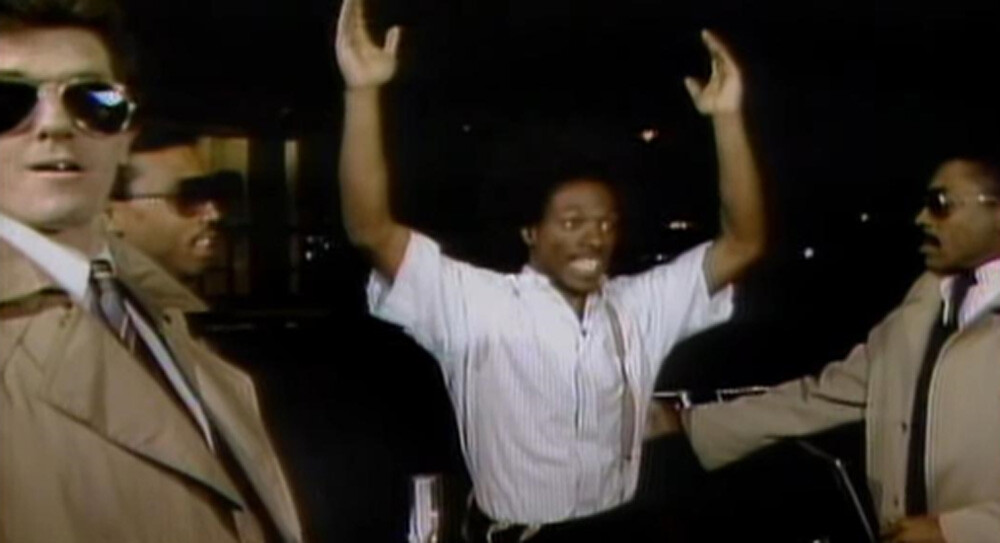
NBC
That didn’t stop SNL from parodying network news’ bloodshed fetish, replaying Buckwheat’s shooting over and over and over again. The murder was intercut with archival footage of celebrities mourning dead luminaries, making it seem like Charlton Heston, Henry Kissinger, and Ronald Reagan were paying tribute to their fallen friend.
Somehow, Murphy and his writers kicked it up a notch the following week. Part two featured Murphy in a new role: Buckwheat killer John David Stutts. The writers recognized that while serial killers only have two names, famous assassins like Lee Harvey Oswald, John Wilkes Booth, and Mark David Chapman always have three.
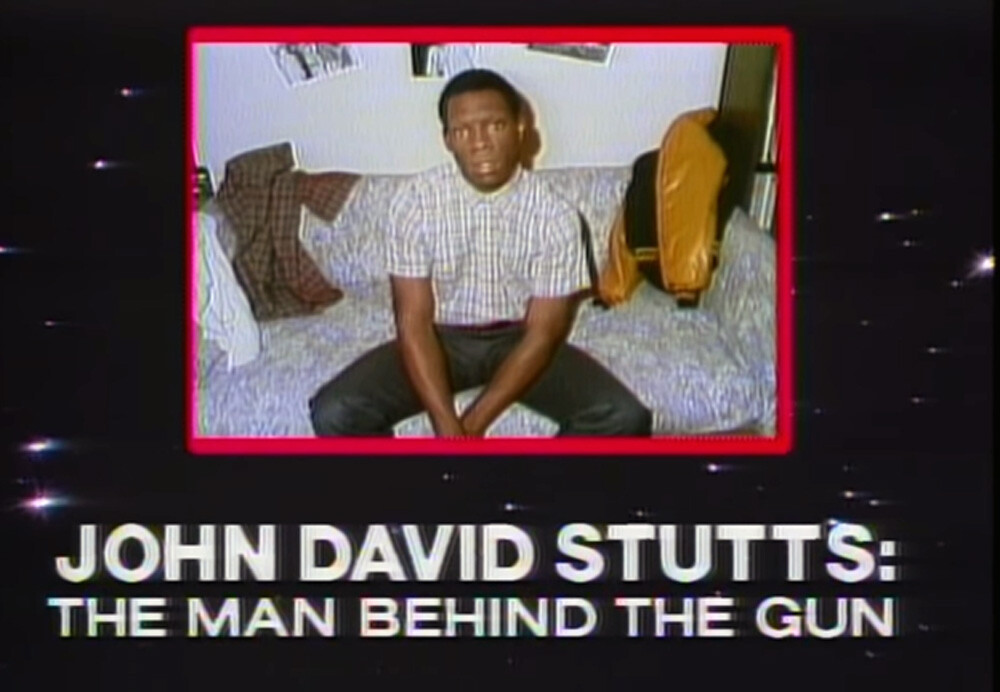
NBC
The sketch continued to pummel the news media:
DR: IRWIN FLETCHER: Unfortunately, certain irresponsible members of the media are only too eager to turn these assassins into instant celebrities.
TED KOPPEL: Thank you, Doctor. Let's take a look at the man who killed Buckwheat, John David Stutts.

NBC
Stutts was a vivid parody of assassin tropes, “described by those who knew him as a loner” and as “a quiet young man.” The difference? None of his acquaintances were surprised that Stutts was a murderer.
TED KOPPEL: Do you believe he killed Buckwheat?
MERCY SEAT BAPTIST CHURCH PASTOR: Oh, yes. Definitely. That's all he talked about.
In high school, Stutts was president of the Future Assassins of America. His classmates voted him “Most Likely to Assassinate Buckwheat.” And the eyebrow-less Stutts himself didn’t put up much of a defense:
REPORTER: Mister Stutts, sir, did you kill Buckwheat?
JOHN DAVID STUTTS: Sure.
Finally, to complete the cycle of the modern assassin, Murphy killed John David Stutts as well, complete with a corporate sponsor.
ANNOUNCER: The death of John David Stutts has been brought to you LIVE by Mutual Life: Because you could die tomorrow. Just like John David Stutts.
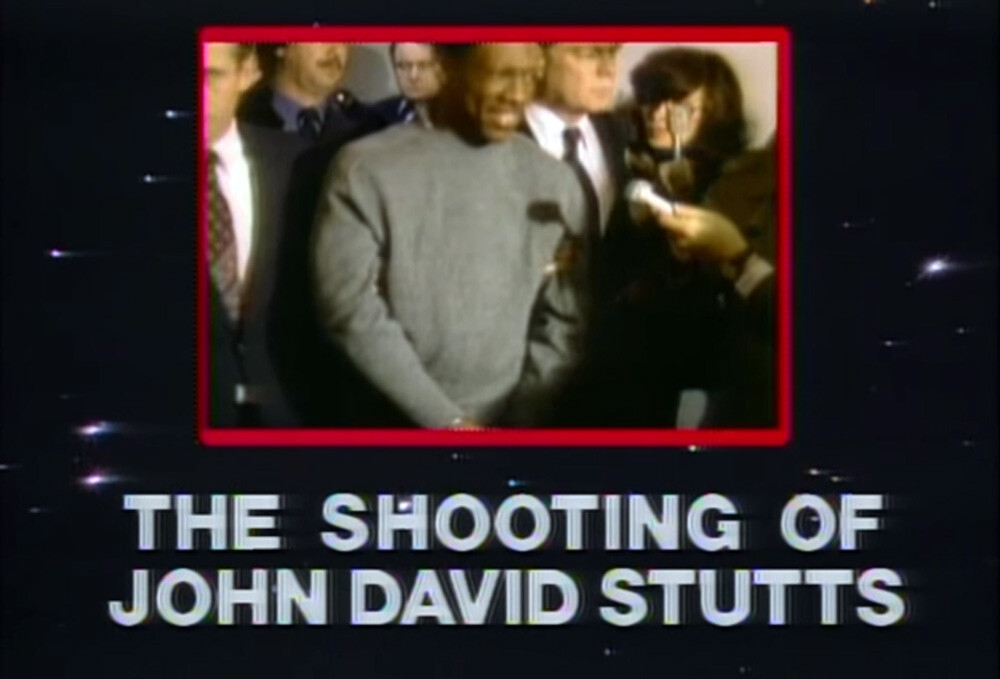
NBC
As brilliant as the sketches were, the second part of the Assassination of Buckwheat almost didn’t happen.
“The censors were kind of unhappy,” says writer Barry Blaustein, noting network honchos were sensitive on anything remotely associated with the Kennedy assassination. “And we were like, ‘Oh, come on.’”
Ebersol fought back, even threatening to quit the show unless the sketch aired in full. The NBC censor, Cory Dunham “called Grant Tinker and Grant laughed in his face when he heard the story,” Ebersol says. “And Cory called me and said, ‘Never mind.’”
Through The Minefield
Even without Buckwheat, Murphy was too big for SNL. He lasted one more season, and even then, he only appeared live on half the shows. Just like the SNL sketches, his movies blew up, making any kind of normal life impossible. Killing off old characters wouldn’t solve that problem.
So Murphy created new ones, like Coming to America’s Prince Akeem. The movie gave him an opportunity to live out a fantasy of traveling to a far-off land where no one knew who he was, where he could live as a regular person.

Paramount Pictures
That plot is eerily similar to Dave Chappelle’s real-life escape to Africa when, like Murphy, the vice of fame squeezed too tightly. Those screams of “Buckwheat!” sound a lot like the “I'm Rick James, bitch!” catcalls Chappelle heard everywhere he went. As Chappelle said in his 2004 stand-up special about a trip to Disneyland, “You mind not calling me a bitch in front of my kids?”
Crushing adulation was “one of the reasons why I stopped doing standup,” Murphy told Marc Maron on the WTF podcast. Audiences were laughing at every word that came out of Murphy's mouth. “You couldn't really tell how funny it was or if it was like some Pavlovian sh*t.”
The only solution was time and the maturity that comes with it. “Remember, my sh*t jumped off really, really big,” said Murphy. “And I'm a really young guy. There's a lot of stuff you have to navigate, literally have to go through this minefield just to get through, that whole being in your twenties and being famous.”

Murphy has taken other breaks over the years, notably in 2011 after winning one too many Razzies. But time and family have given him perspective. “I'm the most comfortable I've ever been in my skin,” Murphy told Oprah earlier this year. “I feel great and optimistic and totally comfortable in Eddie.”
He seems to be back in a groove with movies like Dolemite. He’s even returning to stand-up, though last year’s proposed tour was derailed by COVID. Fingers crossed, that’s coming.
After years of feuding with Saturday Night Live, he finally returned to 30 Rock in 2019. There was no profound reason for the return, other than it was time to let go of old grudges. Murphy scored his first Emmy (Outstanding Guest Actor in a Comedy Series) for his trouble. It was a chance to revisit some old friends, both real and fictional.
And as he prepared for the show, Murphy knew it was time to heal some wounds.
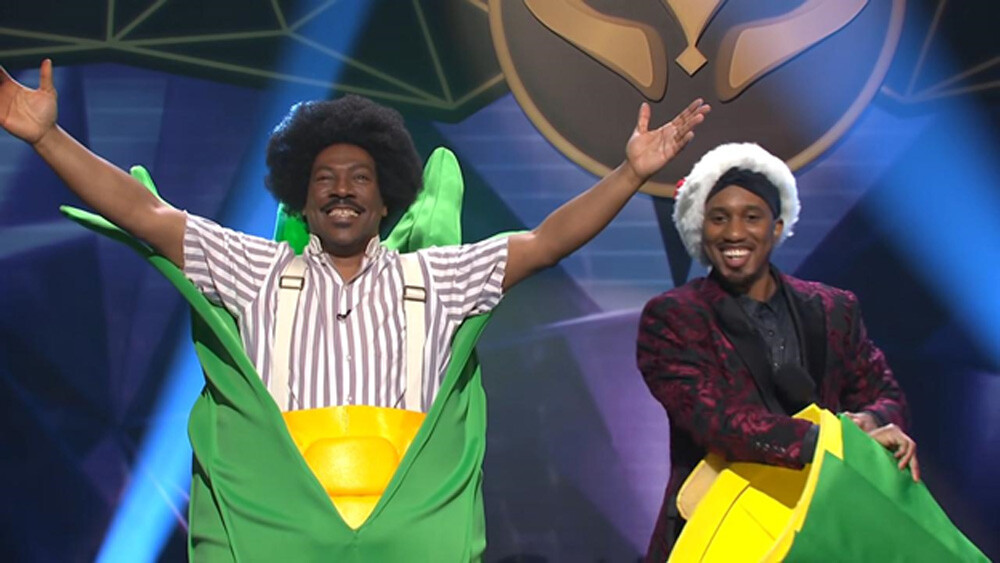
NBC
